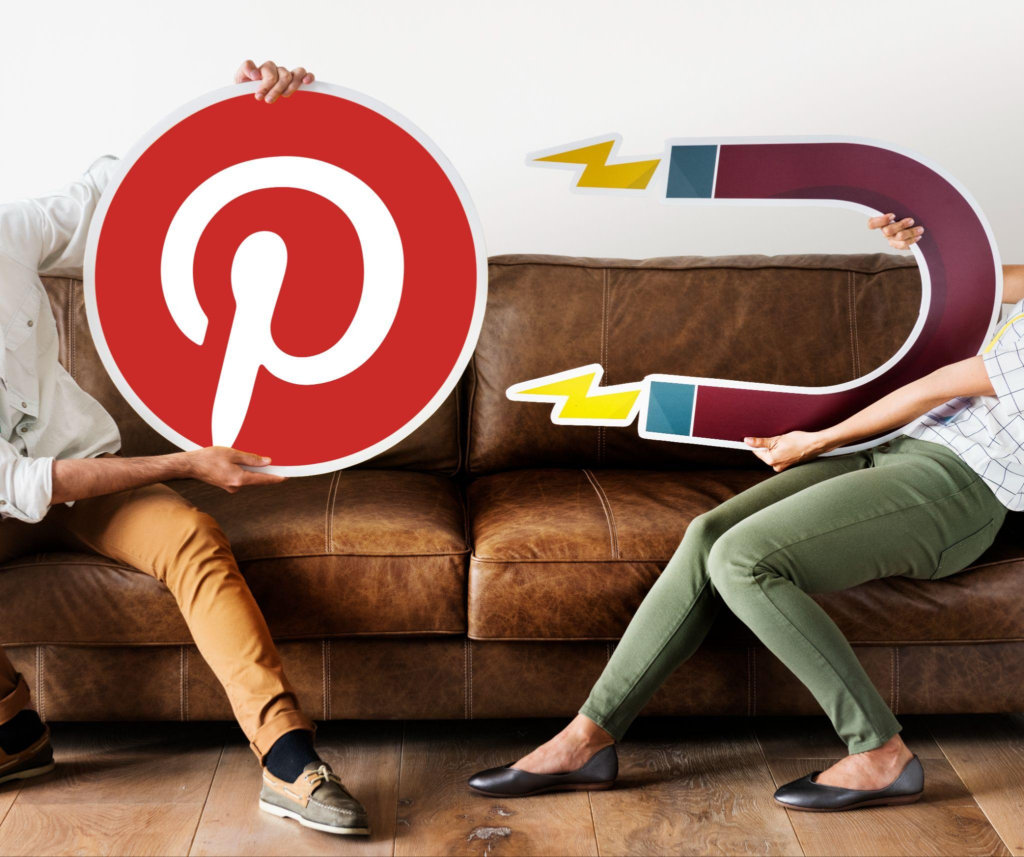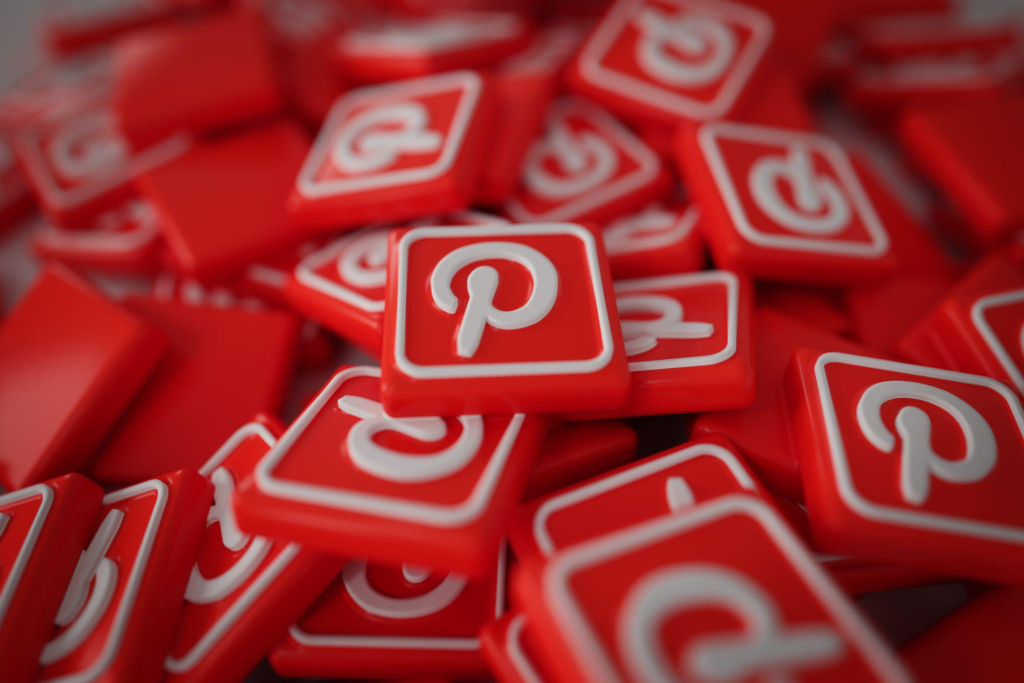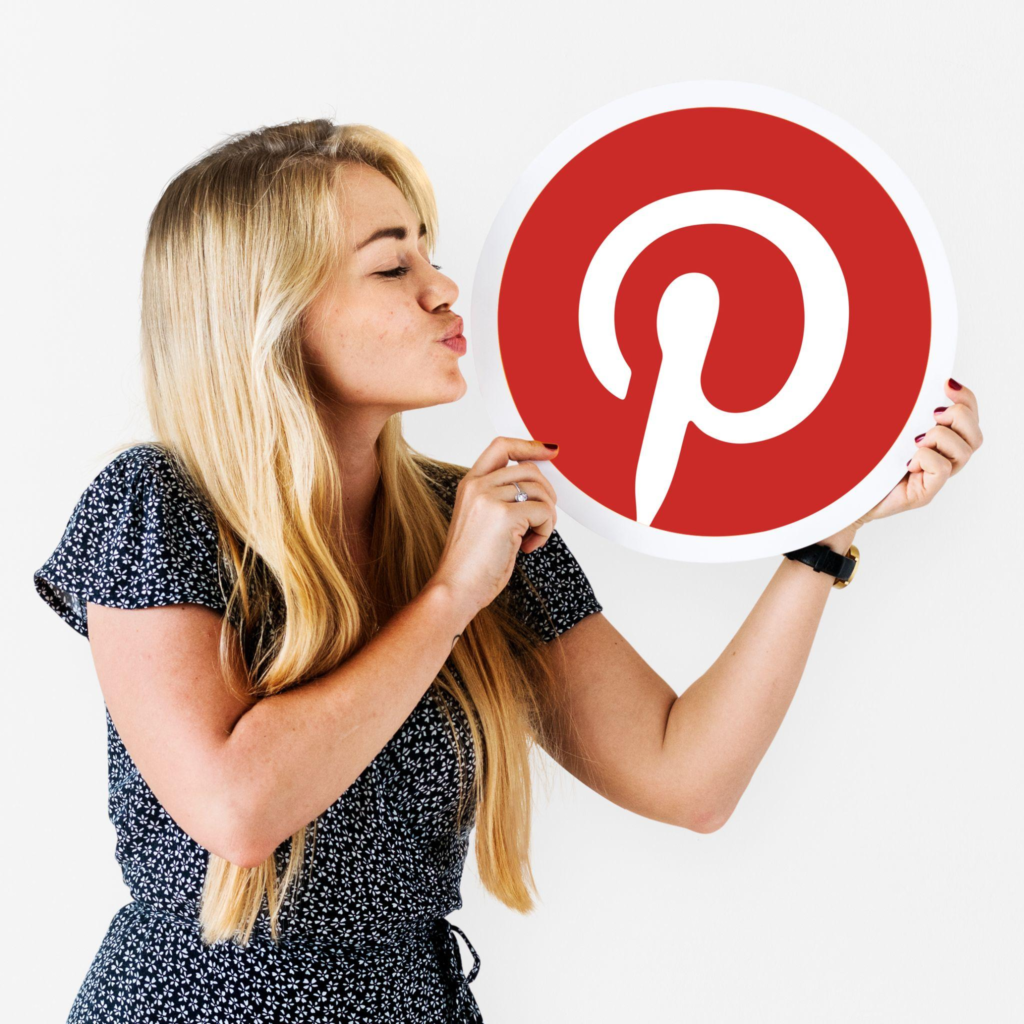In the vast landscape of e-commerce, where competition is fierce and the digital marketplace is constantly evolving, businesses are continually searching for innovative ways to stand out. One such innovative platform that has proven its worth time and time again for e-commerce success is Pinterest. With over 400 million active users, Pinterest is not only a visual wonderland but also a treasure trove of opportunities for e-commerce businesses.
In this blog, we will delve into the world of Pinterest and unveil 10 time-tested strategies that have helped countless e-commerce entrepreneurs achieve remarkable success on this platform. Whether you’re just starting your e-commerce journey or looking to revamp your Pinterest strategy, these tried-and-true methods will provide valuable insights and guidance.
Why Pinterest for E-commerce?
Before we dive into the strategies, let’s first explore why Pinterest is such a game-changer for e-commerce businesses. What sets Pinterest apart from other social media platforms, and why is it a must-include element in your digital marketing arsenal?
1. Visual Appeal and Discovery
Pinterest is inherently visual. Users are drawn to the platform to explore and discover new ideas, products, and services through striking images and creative visuals. This visual orientation makes Pinterest an ideal fit for e-commerce, where the first impression is often the deciding factor for a purchase.
When you think about it, shopping is an experience deeply rooted in visual cues. Whether it’s the sleek design of a smartphone, the mouthwatering image of a gourmet meal, or the vibrant colors of a summer dress, consumers are influenced by what they see. Pinterest allows e-commerce businesses to showcase their products and services in a way that truly resonates with the visual preferences of their target audience.
2. Intent-Driven Audience
One of the standout features of Pinterest is that it attracts an audience with clear intent. People on Pinterest are actively searching for ideas and solutions. Whether it’s home decor, fashion inspiration, or gift ideas, Pinterest users often have a purpose in mind when they log in. This is in stark contrast to other platforms where users might be passively scrolling through their feeds.
For e-commerce businesses, this intent-driven audience is a goldmine. It means that users are more likely to engage with your content and convert into customers if your products or services align with their needs and aspirations. Pinterest allows you to tap into this audience and capture their interest at a pivotal moment in their buying journey.
3. Organic and Evergreen Reach
Pinterest has a unique advantage when it comes to content visibility. Unlike some social media platforms where the lifespan of a post can be measured in minutes, Pinterest content has a more extended shelf life. A well-pinned image or idea can continue to gain engagement and attract new users for months or even years after it’s posted.
This evergreen quality of Pinterest content makes it a sustainable marketing tool. It’s not a fleeting moment in the fast-paced world of social media; it’s a long-term investment that keeps on giving. By mastering the art of pinning, e-commerce businesses can create a valuable reservoir of content that consistently drives traffic and sales over time.
4. Diverse and Niche-Oriented Audiences
Pinterest isn’t just a platform for fashionistas or DIY enthusiasts. It caters to a wide array of niches and interests. From tech gadgets to organic skincare, there’s a Pinterest community for nearly every conceivable e-commerce niche. This diversity means that no matter what your business specializes in, you can find and connect with an audience that’s genuinely interested in what you have to offer.
Moreover, Pinterest’s user base is characterized by a strong female presence, with women making up the majority of users. This presents a unique opportunity for businesses targeting female consumers. However, don’t be misled; Pinterest is not limited to women only. Men are increasingly using the platform for various purposes, making it even more versatile for e-commerce marketers.
5. Valuable Insights and Analytics
To succeed in e-commerce, data-driven decision-making is imperative. Pinterest provides businesses with a rich set of analytics tools to track the performance of their pins and boards. These insights allow e-commerce entrepreneurs to understand their audience better, measure the effectiveness of their strategies, and make informed adjustments as needed.
In a world where ROI (Return on Investment) is a pivotal metric, Pinterest’s analytics tools enable businesses to calculate their returns with precision. By knowing what works and what doesn’t, e-commerce businesses can allocate their resources more efficiently and maximize their results.
Now, let’s explore the 10 time-tested Pinterest strategies that can help you leverage these advantages and achieve remarkable success in the world of e-commerce.
1. Creating Stunning and Relevant Pins: The Cornerstone of Pinterest Success

In the realm of e-commerce, one of the most compelling platforms for businesses to explore is Pinterest. With its 400 million active users and a unique emphasis on visual content, Pinterest offers a treasure trove of opportunities for e-commerce success. At the core of this digital haven for creative ideas and inspiration is a fundamental concept: pins. In this section, we’ll delve into the significance of creating stunning and relevant pins, a practice that is, without a doubt, the cornerstone of Pinterest success.
At the heart of Pinterest’s appeal lies its visual nature. To make the most of this platform, you must create stunning and relevant pins. High-quality, visually appealing images and graphics are a must. Invest in professional photography or graphic design if needed. Ensure that your pins are directly related to your products and services, and make them engaging and shareable. Consistency in style and branding across your pins can help establish your identity on the platform.
2. Optimize for SEO

Understanding Pinterest as a search engine is the first step in leveraging its capabilities for e-commerce success. By tailoring your Pinterest content to be discoverable through search, you tap into an intent-driven audience, where users actively seek out products and services that align with their interests.
The Power of Keywords
At the core of Pinterest SEO lies the power of keywords. Keywords are the phrases and terms that users enter into the Pinterest search bar to find specific content. Incorporating these keywords strategically into your Pinterest content can significantly boost your visibility in search results.
Here’s how you can optimize your Pinterest presence with keywords:
Pin Descriptions: The descriptions you provide for your pins are critical. Each pin description should be clear, concise, and include relevant keywords. For example, if your e-commerce business specializes in handmade jewelry, a pin description might include keywords like “handmade silver necklace” or “artisan jewelry.”
Board Names: Your boards serve as organizational categories for your pins. When naming your boards, choose names that reflect your niche and target keywords. These names are not only for organization but also impact your discoverability. In the case of a board for the aforementioned jewelry business, a name like “Artisan Silver Jewelry” can be an SEO-friendly choice.
Profile Information: Don’t overlook your Pinterest profile. Incorporate keywords into your business name, profile description, and any other relevant fields. This ensures that your profile is discoverable when users search for terms related to your e-commerce niche.
Research and Strategic Implementation
Research is an integral part of any effective SEO strategy, and Pinterest is no exception. To make the most of Pinterest’s search capabilities, research popular and trending keywords within your niche. You can use tools like Pinterest’s own “Trends” feature to identify what’s currently popular. Furthermore, explore other keyword research tools to discover the terms and phrases your target audience is likely to use.
Once you’ve identified relevant keywords, it’s time for strategic implementation. As mentioned earlier, these keywords should be seamlessly integrated into your pin descriptions, board names, and profile information. It’s not about stuffing your content with keywords but rather about using them naturally in a way that enhances the user experience.
Effective keyword usage not only improves your chances of appearing in search results but also helps users quickly identify that your content aligns with their interests. This can lead to higher engagement rates and conversions.
Why Pinterest SEO Matters for E-commerce?
Pinterest SEO is not just a fancy term or an optional add-on to your digital marketing strategy. It’s a fundamental element that can make or break your e-commerce success on the platform. Here’s why it matters:
Visibility: Pinterest SEO increases the visibility of your pins and boards in search results. When users search for products or services related to your business, your optimized pins are more likely to appear in their search results. This heightened visibility can lead to more clicks and engagement.
Targeted Traffic: By incorporating relevant keywords, you attract a more targeted audience. Users who find your content through keyword-driven searches are more likely to be interested in what you offer. This can result in higher conversion rates and a more engaged following.
Competitive Advantage: In the highly competitive e-commerce landscape, any advantage counts. Pinterest SEO can provide that edge. By optimizing your content, you outperform competitors who neglect this crucial aspect of Pinterest marketing.
Long-Term Benefits: Pinterest content has a longer lifespan compared to many other social media platforms. Optimized pins can continue to attract users long after their initial posting. This long-term benefit is akin to the compounding effect of SEO on websites.
Data-Driven Decision-Making: Pinterest provides robust analytics to help you understand the performance of your pins. With an SEO-focused approach, you can measure the effectiveness of your keyword choices and refine your strategy based on data.
3. Pin Regularly and Consistently

Consistency is key on Pinterest. Create a pinning schedule and stick to it. Pinning regularly not only keeps your content fresh but also helps build your presence on the platform. Pinterest’s algorithm rewards frequent pinners. Use scheduling tools to automate your pinning process, making it easier to maintain a consistent presence without being tied to the platform 24/7.
Why Consistency Matters on Pinterest
Pinterest thrives on fresh and engaging content. As users continually seek inspiration, ideas, and products, maintaining a regular presence on the platform is crucial. There are several reasons why consistency is a linchpin of success on Pinterest:
1. Feed Freshness: Pinterest’s algorithm prioritizes fresh content. Pins that have been recently added or updated are more likely to appear in users’ feeds and search results. Consistent pinning ensures that your content remains relevant and visible.
2. Building Trust: Consistency builds trust with your audience. When users see that your Pinterest profile is regularly updated with valuable content, they are more likely to follow, engage, and view your brand as a dependable source of inspiration.
3. Algorithm Rewards: Pinterest rewards frequent pinners. The more you pin, the more the platform’s algorithm recognizes your commitment and dedication. This, in turn, can lead to increased visibility and engagement.
4. Scheduling and Automation: To maintain a consistent presence on Pinterest, you don’t have to be tied to the platform 24/7. Utilizing scheduling tools like Tailwind can make the process easier. These tools allow you to schedule pins in advance, ensuring a steady flow of content even when you’re not actively pinning.
Creating a Pinning Schedule
To achieve consistency in your Pinterest strategy, it’s crucial to create a pinning schedule. Here’s how to go about it:
1. Set Goals: Start by defining your Pinterest goals. Are you looking to increase brand visibility, drive traffic to your e-commerce site, or boost sales? Your goals will influence the frequency and type of content you pin.
2. Choose Pinning Frequency: Based on your goals, select a pinning frequency that you can realistically maintain. Daily, several times a day, or a few times a week are common choices. Consistency is more important than the frequency itself.
3. Content Variety: Diversify your content. Don’t limit your pins solely to product images. Include how-to guides, informative infographics, and inspirational content related to your products or industry. Variety keeps your followers engaged and interested.
4. Schedule in Advance: Use scheduling tools like Tailwind to create a pinning calendar. These tools allow you to plan and schedule pins ahead of time, ensuring a consistent presence without constant manual effort.
5. Monitor and Adjust: Regularly assess the performance of your pins and your pinning schedule. Pinterest analytics can provide insights into which pins are working well and when your audience is most active. Use this data to fine-tune your strategy.
The Role of Scheduling Tools
Scheduling tools play a pivotal role in maintaining a consistent Pinterest presence. One such tool, Tailwind, offers several benefits:
1. Time Efficiency: Scheduling tools save time. Instead of logging into Pinterest multiple times a day to pin content, you can set aside dedicated times to schedule pins for the upcoming week or month.
2. Data-Driven Insights: Tools like Tailwind provide insights into the best times to pin based on your audience’s behavior. This ensures that your content is shared when it’s most likely to reach your target audience.
3. Content Curation: You can discover and curate content from others in your niche, broadening your reach and showcasing your brand’s authority and knowledge.
4. Automation: Scheduling tools automate the process, ensuring that your pins are consistently published without manual intervention.
4. Diversify Your Content

While product pins are essential for e-commerce businesses, it’s crucial to diversify your content to keep your audience engaged. Create how-to guides, informative infographics, and inspirational content related to your products or industry. This variety keeps your followers interested and more likely to interact with your brand.
Here’s why diversifying your content matters –
1. Audience Engagement: Different types of content appeal to different users. Some may be drawn to product images, while others may prefer how-to guides or informative infographics. By diversifying, you cater to a broader range of preferences and keep your audience engaged.
2. Educational Value: How-to guides and informative content can educate your audience about your products or industry. This positions your brand as an authority and builds trust with your followers.
3. Inspiration: Inspirational content sparks creativity and encourages users to visualize how your products can enhance their lives. It helps them see the value in what you offer.
4. Shareability: Certain types of content, like infographics or inspirational quotes, are highly shareable. When your content is shared, it reaches a broader audience and increases your brand’s visibility.
Varieties of Content to Explore
How-to Guides: Creating how-to guides related to your products or industry can be highly engaging. For example, if you sell fitness equipment, you can provide exercise guides or nutrition tips. These guides showcase the value of your products while offering valuable information.
Informative Infographics: Infographics are excellent for presenting data, statistics, and step-by-step processes. They are visually appealing and easy to digest, making complex information more accessible.
Inspirational Content: Inspirational content can take many forms, from quotes related to your industry to lifestyle images that align with your brand’s ethos. These pins inspire and motivate your audience.
Behind-the-Scenes: Pull back the curtain and offer a glimpse behind the scenes of your e-commerce business. Share stories about your team, your manufacturing process, or the journey of your products from concept to creation.
Customer Testimonials: User-generated content, such as customer reviews or photos of customers using your products, provides social proof and builds trust with potential buyers.
How-to Videos: If your products or services involve complex usage, consider creating how-to videos. Videos are a highly engaging format and can be shared across various social media platforms.
User-Generated Content: Encourage your customers to create content related to your products. This can include photos, videos, and reviews. Sharing user-generated content shows appreciation for your customers and strengthens your community.
The Content Creation Process
Understand Your Audience: To diversify your content effectively, you need to understand your audience’s preferences and interests. What type of content resonates with them? What problems do they want to solve, and how can your content help?
Align with Brand Values: While diversifying content, ensure that it aligns with your brand’s core values and messaging. Consistency in brand voice and image is essential.
Set Clear Goals: Each piece of content should serve a specific purpose. Whether it’s to inform, inspire, or entertain, set clear goals for each type of content you create.
Quality over Quantity: It’s essential to maintain quality across all types of content. High-quality images, well-researched infographics, and well-produced videos are more likely to engage your audience.
Consistency: While diversifying content, maintain a consistent posting schedule. Consistency fosters reliability and keeps your audience engaged.
The Benefits of Diversification on Pinterest
Pinterest rewards diverse content creators. By providing various types of content, you not only appeal to a wider audience but also benefit from the platform’s algorithm. Pinterest recognizes accounts that consistently offer valuable, engaging content in various formats.
Diversifying your content not only fosters engagement but also allows you to showcase your brand’s personality, values, and expertise in new ways. By demonstrating a deep understanding of your niche and your audience’s needs, you can position your e-commerce business as a go-to source of information and inspiration.
In the multifaceted world of e-commerce, diversifying your content on Pinterest is akin to unveiling different facets of your brand and products. It enriches your relationship with your audience, expands your reach, and propels your e-commerce success to new heights.
5. Leverage Rich Pins

Rich pins are a fantastic tool for e-commerce businesses on Pinterest. There are four types of rich pins: product pins, article pins, recipe pins, and app pins. For e-commerce, product pins are the most relevant. They provide additional information about your products, such as pricing, availability, and where to purchase. Rich pins can lead to higher click-through rates and conversions.
6. Utilize Pinterest Shopping Ads

Pinterest Shopping Ads are a paid advertising feature that can help e-commerce businesses reach a broader audience. These ads appear in users’ feeds and search results, showcasing your products with a “Shop Now” call to action. Pinterest Shopping Ads provide targeting options that allow you to reach the right audience for your products. By investing in these ads, you can drive more traffic and sales to your ecommerce store.
7. Collaborate with Influencers

Influencer marketing has gained significant traction on Pinterest. Collaborating with influencers in your niche can help your e-commerce business tap into a wider audience. Influencers can create and share content related to your products, giving you exposure to their followers. This strategy can be particularly effective if the influencer’s style and values align with your brand.
8. Create and Optimize Boards
Your boards on Pinterest are where you organize and categorize your pins. They also play a crucial role in your visibility on the platform. Create boards that are relevant to your products and industry, and make sure to optimize their descriptions with keywords. When users follow your boards, your pins will show up in their feeds, increasing your reach.
9. Engage with Your Audience

Pinterest is a social platform, and like any social network, engagement is key. Respond to comments on your pins, engage with your followers, and participate in group boards and community discussions. The more you interact with your audience, the more you’ll be seen as a valuable and trusted source within your niche.
10. Analyze and Adjust Your Strategy
Pinterest provides a wealth of analytics to help you understand your audience and the performance of your pins. Regularly review these analytics to gain insights into what’s working and what’s not. Adjust your strategy based on the data. Test different pin styles, posting times, and content types to refine your approach continually.
Conclusion
Pinterest is a powerful platform for e-commerce businesses, offering a unique opportunity to connect with a visually oriented audience. By implementing these time-tested Pinterest strategies, you can increase your brand’s visibility, drive more traffic to your e-commerce store, and ultimately boost your sales. Remember that success on Pinterest takes time and consistent effort, so be patient and stay committed to refining your strategy as you go. With dedication and creativity, your e-commerce business can flourish on this visually captivating platform.
Meet Sarah, the marketing manager of an up-and-coming D2C skincare brand. Facing stiff competition, Sarah turned to ChatGPT to enhance her social media strategy. By using ChatGPT, her brand was able to engage with customers in a highly personalized manner.
The Challenge: Sarah needed to boost brand engagement and connect with her audience more effectively on social media platforms.


